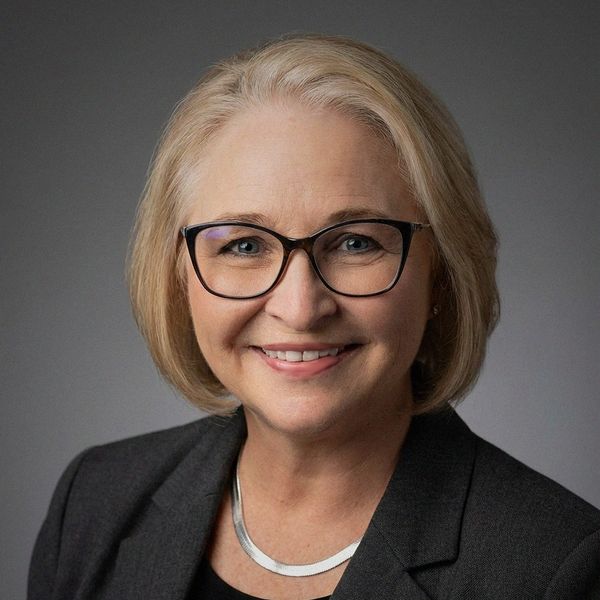Transforming lives through effective treatments, education, advocacy and research.
About HCT Foundation, Inc.

The journey that started a movement.
My name is Dr. Traci Patterson, and I am both a CRPS survivor and an unwavering advocate for those living with CRPS and complex chronic pain.
As an accomplished clinician and healthcare executive with global expertise in advancing breakthroughs for the treatment of Complex Regional Pain Syndrome (CRPS) and complex chronic pain via integrative and holistic protocols, I am committed to making a difference. Awarded Top 10 Visionary Leader, CEO of the Year, Top 100 Most Inspirational Leaders, Health Activist Awards and Best Holistic Pain Specialist.
It was my personal journey with CRPS coupled with the pressing need for research, support and viable treatment options among individuals affected by CRPS that was the driving force behind HCT Foundation.
I want to share some insight into my journey with CRPS, so you will truly understand why I am so passionate about HCT Foundation.
In December 2005, I sustained a seemingly minor ankle sprain, which initiated a sequence of medical challenges that significantly altered the trajectory of my life. Despite multiple X-rays revealing no fractures, my condition did not improve as expected. Consultations with a local podiatrist resulted in various diagnoses and ultimately led to a series of unnecessary surgeries. One particular operation was marked by critical errors, including nerve damage and tendon rupture, which precipitated the onset of Complex Regional Pain Syndrome (CRPS).
Following this operation, I began experiencing continuous and severe pain, accompanied by persistent muscle spasms. Specialists struggled to identify the underlying cause, until I was referred to a pain management physician who diagnosed me with CRPS. The prognosis was uncertain: while early intervention presented hope for remission, the diagnosis itself was profoundly disheartening because CRPS is classified as a rare incurable disease.
Understanding CRPS
Individuals diagnosed with CRPS face daily challenges in managing pain without a definitive cure. The pain associated with CRPS is extreme. It's rated higher than natural childbirth and even that of some burn victims. Achieving remission becomes the primary goal.
Patients are compelled to reevaluate their aspirations and adapt to significant lifestyle changes, often while appearing outwardly unaffected. Given the invisible nature of neurological pain conditions such as CRPS, misunderstanding from others is common.
Effects of CRPS on Daily Life
Living with CRPS necessitates adjusting future expectations and activities, as the condition may preclude previous personal or professional pursuits. Social dynamics can shift, with some relationships strained due to lack of understanding regarding the limitations imposed by the disease. The impact extends beyond the individual, affecting family, friends and community interactions.
Distinctive Aspects of CRPS
Currently, CRPS does not have a cure, and traditional pain management pathways frequently yield limited results. Many patients do not respond to standard treatments, prompting a progression through medications, therapies, and procedural interventions, often with little improvement. Some CRPS patients are actually getting worse with traditional treatments.
My journey with CRPS involved a succession of opioid medications, and numerous interventional procedures. Despite aggressive attempts—including lumbar sympathetic blocks, years of physical therapy, hyperbaric oxygen therapy, the implantation of two spinal cord stimulators, low dose ketamine, etc.—my symptoms persisted and worsened, causing my CRPS to spread through 80% of my body and resulting in additional complications.
Ultimately, conventional medicine reached its limits, and my care team acknowledged that further interventions were unlikely to provide relief. Essentially, they gave up and threw in the towel. This reality required a reassessment of my approach to finding viable treatment options.
Refusing resignation, I pursued innovative and integrative treatment modalities abroad and domestically. International treatments provided temporary reductions in pain but lacked lasting efficacy. A turning point occurred following participation in an intensive program focused on the central nervous system, autonomic balance, and mind-body techniques. This approach, incorporating clinical hypnosis, neuroplasticity, and biofeedback, facilitated sustained remission.
During this period, I also recognized the development of post-traumatic stress disorder related to my medical experiences—a factor not uncommon among those enduring CRPS and complex interventions.
Upon returning home, improvements in mobility, well-being, and quality of life became immediately evident to those around me. Over time, these gains were consolidated, enabling renewed participation in everyday activities and family life.
I have now maintained long-term remission since November 2013, underscoring the potential for meaningful recovery even after protracted adversity.
As both a healthcare professional and CRPS survivor, I am dedicated to sharing my story, raising awareness, and advocating for compassionate, patient-centered care for individuals living with CRPS and other forms of complex chronic pain.
Holistic Centered Treatment is uniquely developed by myself; a CRPS survivor; for fellow patients, emphasizing the necessity of a multifaceted, systemic, and integrative approach to chronic pain. A multi-modality program that treats the whole person (physically, mentally and emotionally) is essential to improving outcomes for those affected globally.
For a more in-depth account of my experience with CRPS, I invite you to read my book: Stepping Outside the Box: A Journey from Invisible Pain to Invincible Living, available on Amazon.
I firmly believe that one individual's efforts can initiate change, but collective action can truly transform the world.
Video
Copyright © 2024 HCT Foundation is a 501(c)(3) non-profit organization. EIN 93-3020569
This website uses cookies.
We use cookies to analyze website traffic and optimize your website experience. By accepting our use of cookies, your data will be aggregated with all other user data.